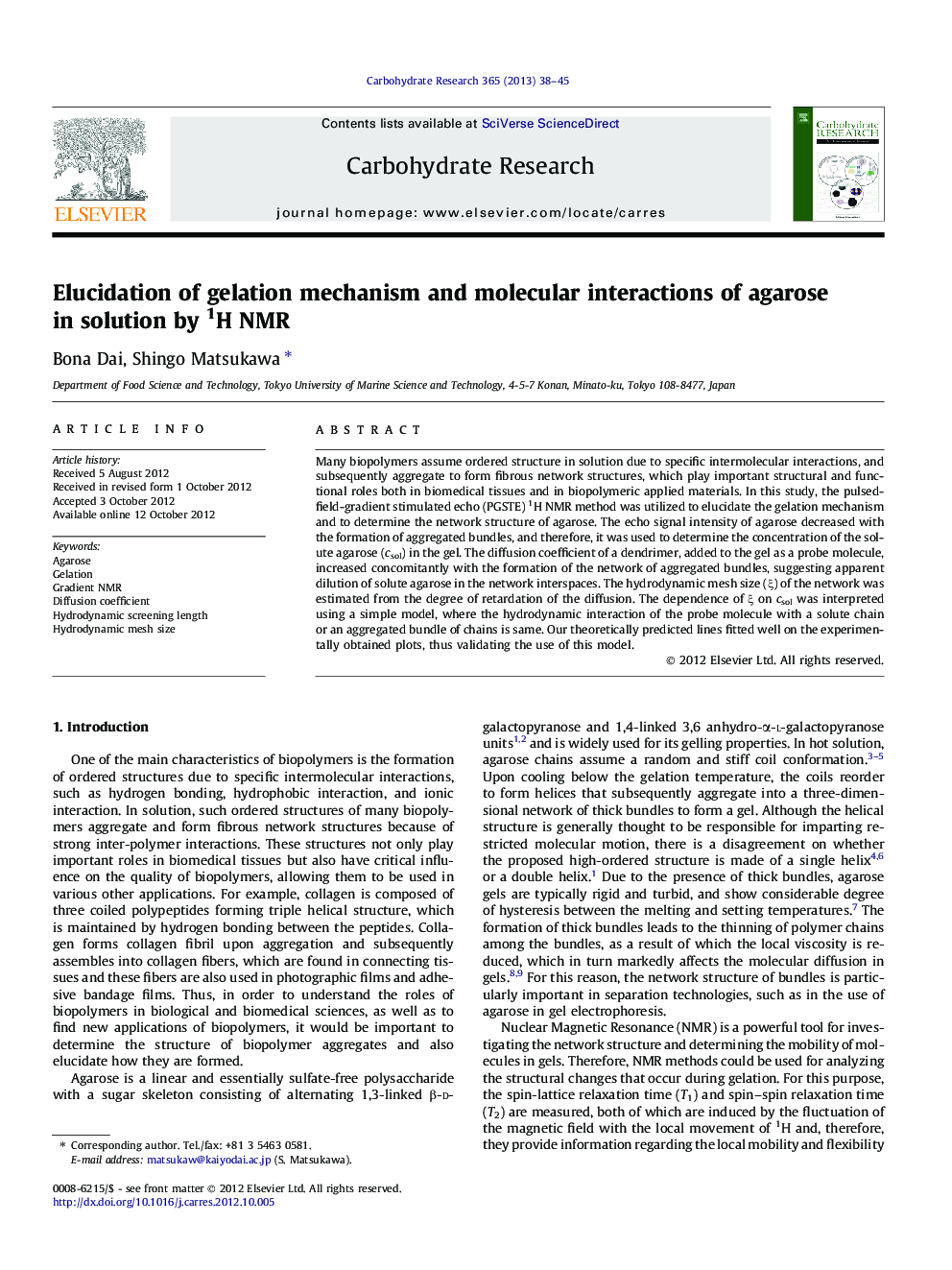| Article ID | Journal | Published Year | Pages | File Type |
|---|---|---|---|---|
| 1387738 | Carbohydrate Research | 2013 | 8 Pages |
Many biopolymers assume ordered structure in solution due to specific intermolecular interactions, and subsequently aggregate to form fibrous network structures, which play important structural and functional roles both in biomedical tissues and in biopolymeric applied materials. In this study, the pulsed-field-gradient stimulated echo (PGSTE) 1H NMR method was utilized to elucidate the gelation mechanism and to determine the network structure of agarose. The echo signal intensity of agarose decreased with the formation of aggregated bundles, and therefore, it was used to determine the concentration of the solute agarose (csol) in the gel. The diffusion coefficient of a dendrimer, added to the gel as a probe molecule, increased concomitantly with the formation of the network of aggregated bundles, suggesting apparent dilution of solute agarose in the network interspaces. The hydrodynamic mesh size (ξ) of the network was estimated from the degree of retardation of the diffusion. The dependence of ξ on csol was interpreted using a simple model, where the hydrodynamic interaction of the probe molecule with a solute chain or an aggregated bundle of chains is same. Our theoretically predicted lines fitted well on the experimentally obtained plots, thus validating the use of this model.
Graphical abstractFigure optionsDownload full-size imageDownload as PowerPoint slideHighlights► We reveal the gelation mechanism in agarose solution by using NMR. ► The signal intensity and diffusion coefficient were related with molecular mobility. ► Diffusions of dendrimer added as a probe gave the information of gelation mechanism. ► A simple model for the change of the microscopic environment was proposed.
